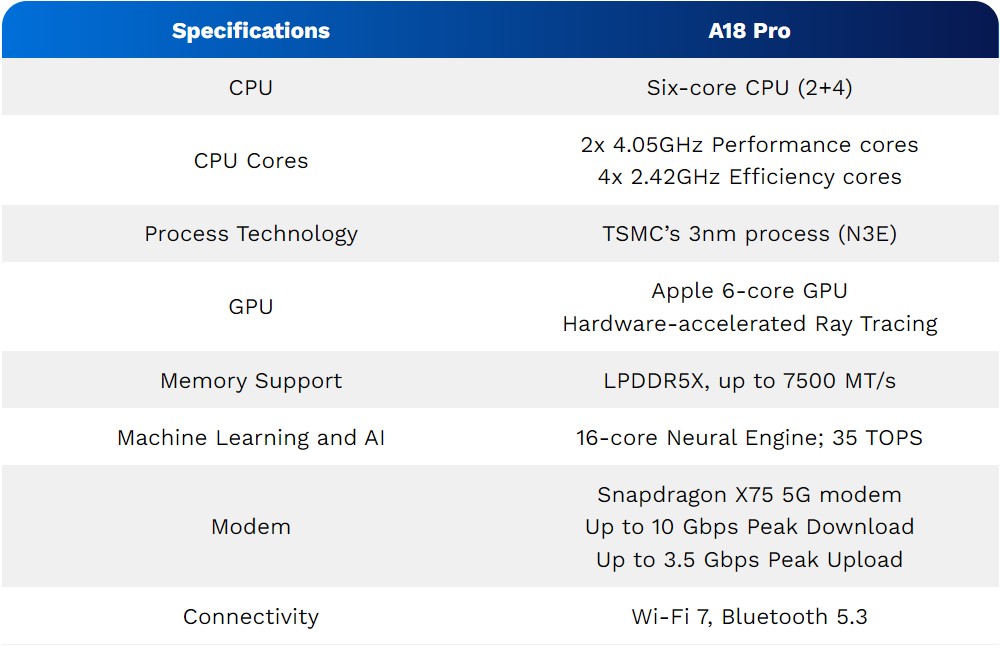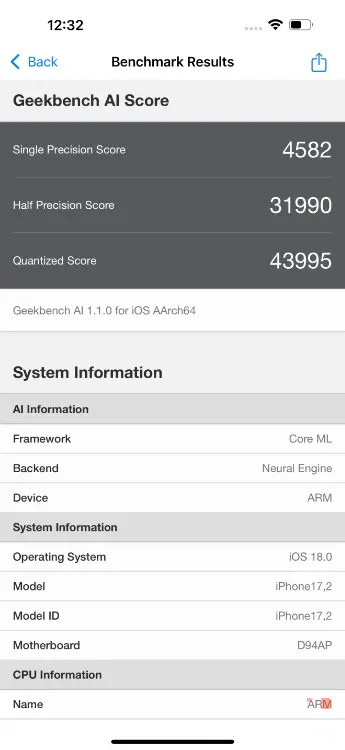
Apple has begun shipping the iPhone 16 Pro series, and we’ve got our hands on the larger iPhone 16 Pro Max. Powered by the cutting-edge A18 Pro chipset, it promises top-tier performance and efficiency. To put it to the test, we’ve run several benchmark tests, including Geekbench, 3DMark, AnTuTu, Geekbench AI, and more. Let’s dive into the results and see how it performs.
A18 Pro Specifications

A18 Pro: Geekbench 6 CPU
In the Geekbench 6.3 CPU test, the iPhone 16 Pro Max, equipped with the A18 Pro chipset, achieved a single-core score of 3,358 and a multi-core score of 8,184. These results are slightly lower than what we saw on iOS 17, as Apple is intentionally delaying frequency boosts on iOS 18 to help conserve battery life.

A18 Pro: AnTuTu Benchmark
In the AnTuTu benchmark test, the A18 Pro scored 1,816,016 points, just shy of the 2 million mark. Despite this, it performed well in the CPU category with 451,848 points, while the 6-core GPU delivered an impressive 728,942 points.


A18 Pro: Geekbench 6 GPU
In the Geekbench 6 GPU test, the A18 Pro’s 6-core GPU scored 32,569 points using Apple’s Metal graphics API, matching the performance of the Apple M1 GPU. The A18 Pro’s GPU provides a 20% speed increase over the A17 Pro, marking a significant enhancement.

A18 Pro: 3DMark Wild Life Extreme Stress Test & Solar Bay
To push the A18 Pro’s GPU further, we conducted the demanding 3DMark Wild Life Extreme Stress test. The A18 Pro’s GPU delivers a 20% speed boost compared to the A17 Pro, representing a notable improvement. The graphite substructure appears to be aiding the 6-core GPU in maintaining its performance over longer durations.

In the 3DMark Solar Bay Unlimited test, which measures Ray Tracing capabilities, the A18 Pro GPU scored 7,985 points with an average frame rate of 30.4 FPS. As shown in the graph below, the Ray Tracing performance remained consistent, dipping slightly only in the final section.

A18 Pro: Geekbench AI
In the latest Geekbench AI 1.1 benchmark test, the A18 Pro’s 16-core Neural Engine scored 4,582 in Single Precision (FP32), 31,990 in Half Precision (FP16), and 43,995 in Quantized (INT8). The Neural Engine demonstrates impressive power in lower-precision formats like FP16 and INT8.
Thanks to high-bandwidth memory, the Neural Engine significantly outperforms last year’s model. Overall, it’s well-equipped to handle Apple’s advanced AI features on the device.

A18 Pro Benchmarked: The Verdict
Overall, the A18 Pro offers significant performance gains across the CPU, GPU, and Neural Engine. Manufactured using TSMC’s N3E process node, the A18 Pro combines impressive power with exceptional efficiency. The inclusion of a graphite substructure allows the SoC to maintain peak performance for extended periods, keeping temperatures in check. In summary, both performance and battery life on the A18 Pro are noticeably improved compared to previous A-series processors.



